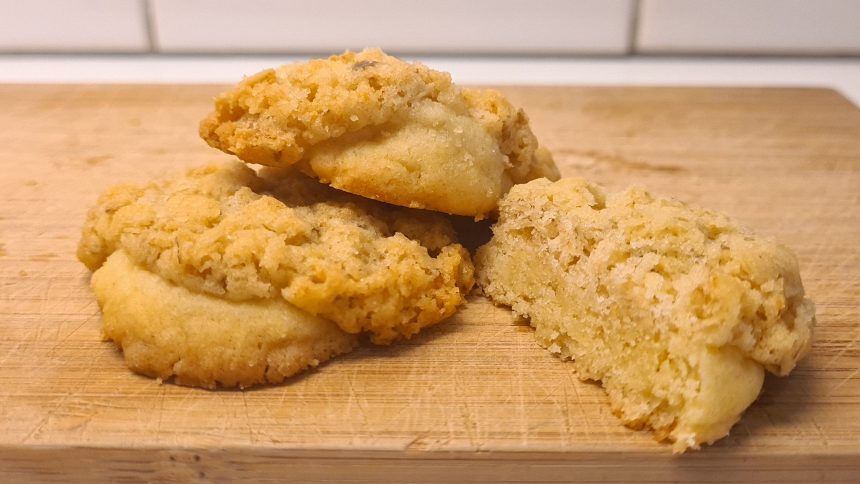
Kakapåkaka kaka
En ny klassiker kan man kalla det. Jag tog två kakor och slog ihop till en. I botten är det mördeg och ovanpå en havrekaka. Det blev en av mina favoritkakor. Lätta att göra är de också. Recept Ugnstemperatur 175 Läs mer…
Nyheter och länkar - en bra startsida helt enkelt |Oculus lyx vitae

En ny klassiker kan man kalla det. Jag tog två kakor och slog ihop till en. I botten är det mördeg och ovanpå en havrekaka. Det blev en av mina favoritkakor. Lätta att göra är de också. Recept Ugnstemperatur 175 Läs mer…

“Childhood” and “dementia” are two words we wish we didn’t have to use together. But sadly, around 1,400 Australian children and young people live with currently untreatable childhood dementia.
Broadly speaking, childhood dementia is caused by any one of more than 100 rare genetic disorders. Although the causes differ from dementia acquired later in life, the progressive nature of the illness is the same.
Half of infants and children diagnosed with childhood dementia will not reach their tenth birthday, and most will die before turning 18.
Yet this devastating condition has lacked awareness, and importantly, the research attention needed to work towards treatments and a cure.
Read more:
Playing a musical instrument or singing in a choir may boost your brain – new study
More about the causes
Most types of childhood dementia are caused by mutations (or mistakes) in our DNA. These mistakes lead to a range of rare genetic disorders, which in turn cause childhood dementia.
Two-thirds of childhood dementia disorders are caused by “inborn errors of metabolism”. This means the metabolic pathways involved in the breakdown of carbohydrates, lipids, fatty acids and proteins in the body fail.
As a result, nerve pathways fail to function, neurons (nerve cells that send messages around the body) die, and progressive cognitive decline occurs.
Childhood dementia is linked to rare genetic disorders.
maxim ibragimov/Shutterstock
What happens to children with childhood dementia?
Most children initially appear unaffected. But after a period of apparently normal development, children with childhood dementia progressively lose all previously acquired skills and abilities, such as talking, walking, learning, remembering and reasoning.
Childhood dementia also leads to significant changes in behaviour, such as aggression and hyperactivity. Severe sleep disturbance is common and vision and hearing can also be affected. Many children have seizures.
The age when symptoms start can vary, depending partly on the particular genetic disorder causing the dementia, but the average is around two years old. The symptoms are caused by significant, progressive brain damage.
Are there any treatments available?
Childhood dementia treatments currently under evaluation or approved are for a very limited number of disorders, and are only available in some parts of the world. These include gene replacement, gene-modified cell therapy and protein or enzyme replacement therapy. Enzyme replacement therapy is available in Australia for one form of childhood dementia. These therapies attempt to “fix” the problems causing the disease, and have shown promising results.
Other experimental therapies include ones that target faulty protein production or reduce inflammation in the brain.
Read more:
20% of children have developmental delay. What does this mean for them, their families and the NDIS?
Research attention is lacking
Death rates for Australian children with cancer nearly halved between 1997 and 2017 thanks to research that has enabled the development of multiple treatments. But over recent decades, nothing has changed for children with dementia.
In 2017–2023, research for childhood cancer received over four times more funding per patient compared to funding for childhood dementia. This is despite childhood dementia causing a similar number of deaths each year as childhood cancer.
The success for childhood cancer sufferers in recent decades demonstrates how adequately funding medical research can lead to improvements in patient outcomes.
Dementia is not just a disease of older people.
Miljan Zivkovic/Shutterstock
Another bottleneck for childhood dementia patients in Australia is the lack of access to clinical trials. An analysis published in March this year showed that in December 2023, only two clinical trials were recruiting patients with childhood dementia in Australia.
Worldwide however, 54 trials were recruiting, meaning Australian patients and their families are left watching patients in other parts of the world receive potentially lifesaving treatments, with no recourse themselves.
That said, we’ve seen a slowing in the establishment of clinical trials for childhood dementia across the world in recent years.
Read more:
Dementia can be predicted more than a decade before diagnosis with these blood proteins
In addition, we know from consultation with families that current care and support systems are not meeting the needs of children with dementia and their families.
New research
Recently, we were awarded new funding for our research on childhood dementia. This will help us continue and expand studies that seek to develop lifesaving treatments.
More broadly, we need to see increased funding in Australia and around the world for research to develop and translate treatments for the broad spectrum of childhood dementia conditions.
Dr Kristina Elvidge, head of research at the Childhood Dementia Initiative, and Megan Maack, director and CEO, contributed to this article. Läs mer…
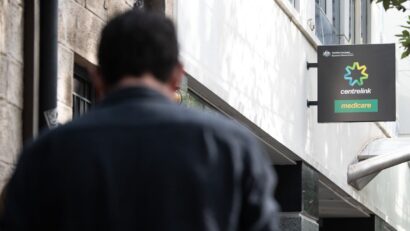
The government’s Economic Inclusion Advisory Committee has just published its second report. It was set up by Treasurer Jim Chalmers and Minister for Social Services Amanda Rishworth in 2022 to provide:
non-binding advice on boosting economic inclusion and tackling disadvantage, including policy settings, systems and structures, and the adequacy, effectiveness and sustainability of income support payments.
I am one of the members.
This year, the report tackled a burning question: why has the gap between unemployment payments and age pensions widened?
Unemployment and related payments for working-age people were given a welcome increase in the 2023–24 budget. But they remain well below pensions, and far from adequate on all measures.
Way below the pension
After the latest regular indexation increase in March, a single jobseeker gets about A$258 per fortnight less than a pensioner in basic payments, and $345 per fortnight less than a pensioner on payments including supplements.
It’s important to understand what’s led us to this point.
The committee’s first report last year noted that the amounts paid are set through a complex historical process that has involved “long periods of inaction” interspersed with “bursts of activity” to address the previous inaction.
The amounts paid out are regularly increased, typically via “indexation” to either wages growth or inflation (prices growth).
Indexation of pensions and benefits was enshrined in legislation in 1976, but at times of high inflation was suspended.
By 1982, unemployment payments were about 80% of the single pension.
From 1983 onwards, the Hawke government increased unemployment payments relative to pensions so that by the time Paul Keating left office as prime minister in March 1996 the rate for a single adult facing unemployment had climbed to 92% of the basic pension.
What widened the gap?
The gap began to widen increasingly quickly from 1997, when the Howard government “benchmarked” pensions to 25% of “male total average weekly earnings”.
This means that although pensions increased in line with the consumer price index, as did unemployment payments, they had to be lifted further to ensure they couldn’t fall below 25% of male total average earnings, whereas unemployment payments did not.
By the early 2000s, the single unemployment payment was worth around 87% of the support for a pensioner, including supplements.
Read more:
Boosting JobSeeker is the most effective way to tackle poverty: what the treasurer’s committee told him
As real wages grew strongly during the mining boom of the early 2000s, the gap widened further to $142 per fortnight ($179 including supplements) by 2009.
And then, although wages were growing less strongly as a result of the global financial crisis, the gap widened again.
The Rudd government lifted single pensions substantially following the recommendations of the 2009 Harmer Review.
Support for unemployed singles fell from 79% of the single pension to just 68% – the biggest gap so far. For couples, the gap fell from 83% to 81%.
The pandemic sparked a brief reprieve
The gap continued to widen until early 2020, when the temporary $550 a fortnight Coronavirus Supplement almost doubled the effective JobSeeker payment, lifting it above the age pension for a short period.
In April 2021, after the gap returned, the Morrison government helped narrow it by lifting JobSeeker by $50 per fortnight, and in 2023 Treasurer Jim Chalmers lifted it a further $40 per fortnight.
But over the past 30 years, the gap has still widened significantly, mainly as an effect of deliberate policy choices to lift support for pensioners.
But from here on, things are set to get worse
Under current indexation and benchmarking arrangements, it is inevitable this gap will continue to widen.
This can be seen in all of the projections of the Intergenerational Reports prepared for the government since 2002.
The latest 2023 report assumes average earnings will increase by 3.7% per year and prices by 2.5% per year over the next 40 years. If this happens, the single rate of JobSeeker will fall to less than half of the pension by 2063.
The improvements achieved through payment increases in 2022 and 2023 would be undone by 2035.
This would lead to much higher rates of relative poverty among working-age benefit recipients in the future. Child poverty would also increase substantially.
What needs to change
The committee has recommended the government commit to a substantial increase in the base rates of JobSeeker and related working-age payments as a first priority, and spell out the time frame in which it will happen.
To ensure this doesn’t need to keep happening, we have also recommended the government improve the indexation arrangements to make sure payments for the unemployed don’t fall behind.
It would still need to regularly review and monitor the relationship between working-age payments and widely accepted measures of community living standards, including wages, but not nearly as often. Läs mer…
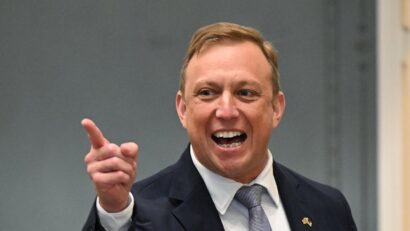
The Queensland state election will be held in October. A YouGov poll for The Courier Mail, conducted April 9–17 from a sample of 1,092 people, gave the Liberal National Party a 56–44% lead over Labor, a four-point gain for the LNP since the early October 2023 YouGov poll.
Primary votes were 44% LNP (up three points), 27% Labor (down six), 15% Greens (up two), 10% One Nation (up two) and 4% for all others (down one).
Labor Premier Steven Miles had a -22 net approval rating, compared with former Labor Premier Annastacia Palaszczuk’s -20 rating in the October poll, with 47% of those polled dissatisfied with his performance and 25% satisfied.
This is the worst net approval for a Queensland premier in YouGov polls for The Courier Mail.
LNP leader David Crisafulli’s net approval was +14, up three points from October. Crisafulli led Miles as better premier by 40–27% (he was 37–35% against Palaszczuk in the October poll).
Asked who they would prefer as premier between Miles and Palaszczuk, voters backed Miles by 53–47%. Labor voters supported Palaszczuk by 51–49%, while LNP voters favoured Miles by 57–43%.
In March, a Newspoll gave the LNP a 54–46% lead over Labor, and there were massive swings to the LNP at two Queensland state byelections.
Labor has governed in Queensland since an upset victory at the January 2015 election. But the party is now facing a heavy defeat at the October election after almost ten years in power.
Labor extends lead in federal YouGov poll
A national YouGov poll, conducted April 19–23 from a sample of 1,514 people, gave Labor a 52–48% lead over the Coalition, a one-point gain since March. Primary votes were 36% Coalition (down two points), 33% Labor (up one), 13% Greens (steady), 8% One Nation (up one) and 10% for all others (steady).
Respondents were given two statements regarding Australian military commitments:
Australians have died for Australia, and we should also be prepared to fight for our country’s values if called upon.
We should be sceptical of politicians who want to commit troops to wars not necessary to the direct defence of Australia.
Overall, voters favoured the prepared to fight statement by 46–42%. However, younger age groups were far more inclined to be sceptical than older people. Those aged 25–34 favoured the sceptical statement by 50–34%, while those 65 and older favoured the prepared to fight statement by 60–34%.
On Monday, I covered drops for Labor in the Resolve, Freshwater and Morgan polls. Polls released since then have been better for Labor – the party improved in YouGov and regained the lead in Morgan.
In economic data, the Australian Bureau of Statistics released the March quarter inflation report on Wednesday. While the 12-month inflation rate slowed from 4.1% in December to 3.6% in March, the quarterly inflation was 1.0% in March, up from 0.6% in December. Persistent inflation probably explains Labor’s mediocre poll ratings.
Essential poll: Coalition regains lead as One Nation surges
A national Essential poll, conducted April 17–21 from a sample of 1,145 people, gave the Coalition a 49–47% lead over Labor (including undecided voters) – a reversal of Labor’s 48–46% lead in early April.
Primary votes were 35% Coalition (up one point), 31% Labor (up two), 11% Greens (down three), 9% One Nation (up three), 1% UAP (down one), 9% for all others (up one) and 4% undecided (down two). Analyst Kevin Bonham said this is the highest One Nation
primary vote from any pollster this term.
Albanese’s net approval was steady since February at -5, with 48% disapproving of his performance and 43% approving. Dutton’s net approval jumped seven points to +3, with Bonham saying this is Dutton’s first positive net approval from any pollster this term. However, Newspoll gave Dutton a net approval of -15.
On Israel’s military action in Gaza, 32% said Israel should permanently withdraw (down five points since March), 19% favoured a temporary ceasefire (down one), and 19% said Israel’s action was justified (up one). By 29–24%, voters supported recognising Palestine as an independent state.
By a 49–26% margin, voters thought the transition from fossil fuels to renewable energy would have a positive impact on Australia as a whole, but were less positive about the personal impact (36–23% positive). And by a 52–31% margin, voters supported Australia developing nuclear energy (compared to 50–33% in October).
Asked which type of energy was most expensive, 40% said renewables (up two points since October), 36% nuclear (up two) and 24% fossil fuels (down four).
By 50–38%, voters thought it unlikely Australia would reach net-zero emissions by 2050 (compared to 57–31% in October).
Morgan poll: Labor regains lead
A national Morgan poll, conducted April 15–21 from a sample of 1,617 people, gave Labor a 52–48% lead over the Coalition, a reversal of a 51–49% Coalition lead from the previous week.
Primary votes were 35.5% Coalition (down three points), 30.5% Labor (up 0.5), 16% Greens (up 2.5), 5.5% One Nation (steady), 7.5% independents (steady) and 5% others (steady).
Additional questions from Newspoll and Resolve
I previously covered the last Newspoll and Resolve poll for Nine newspapers. Recently, Albanese announced a plan to have taxpayer money used for loans and subsidies for projects to help Australia transition to clean energy. Voters backed this plan in Newspoll by 56–38%.
When asked about the Israel-Gaza conflict in the Resolve poll, 46% of voters agreed it had made Australia less safe, compared to 40% in March. By a 61–12% margin, voters thought there had been a rise in racism and religious intolerance in Australia as a result of the conflict (compared to 57–15% in March).
On who Australia should support, 57% (up 12 points since November) said we should take no action, 17% support Israel (down 14) and 9% support Gaza (up two). Läs mer…
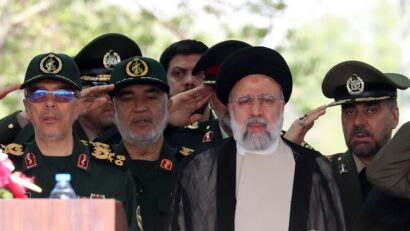
There’s been much talk in recent months about what a possible second Donald Trump presidency in the United States could mean for Europe, Russia’s war in Ukraine, the Israel-Palestinian conflict and China. But there’s one more country closely watching the race: Iran.
Another Trump presidency could pose immense risks for the Iranian leadership, especially given the recent tit-for-tat strikes with Israel, the looming threat of a wider Middle East war, and other significant internal challenges.
Under such conditions, there are three ways a new Trump administration might pose a threat to the clerical establishment: a potential economic shock, bolder military action against the regime and increased protest movements.
Read more:
Should world leaders worry about another Trump presidency?
Renewed economic pressure
In 2018, Trump withdrew the US from the Iran nuclear deal negotiated by his predecessor, Barack Obama, and imposed crippling sanctions on the country as part of his “maximum pressure” campaign on the Iranian government.
Iran’s then-vice president, Eshagh Jahangiri, described the subsequent year as the “toughest” since the Islamic Republic’s inception. Trump’s campaign reduced Iran’s oil exports to a historic low of under 400,000 barrels per day, significantly slashing the country’s petrodollars, which represent about 70% of government revenues. Moreover, between 2018 and 2020, Iran’s national currency depreciated by more than 600%.
After Joe Biden was elected president in 2020, Iran has managed to increase its oil exports. It was recently reported that Iran’s oil exports have reached a six-year high of around 1.56 million barrels per day in the first three month of 2024. Republicans in the US blame the Biden administration for not enforcing sanctions against Iran, while the White House insists they are.
With Iran’s economy still weakened, Trump’s potential return could bring a new wave of pressure. Iran’s Chamber of Commerce, Industries, Mines and Agriculture has noted, for instance, that a Trump return will cause Iran’s oil exports to “suffer again”.
The head of Iran’s Parliament Research Centre has also highlighted the country’s current budget deficit of US$3.7 billion, warning a Trump return would necessitate being ready for “increased sanctions pressure and an economic shock”.
Another economics expert, Morteza Afghe, struck a more dire note when he warned of a potential “collapse of Iran’s economy”. Due to Iran’s more strident anti-Western policies under President Ebrahim Raisi and the dominance of radical factions in parliament, Afghe believes Trump would be even more determined to escalate his “maximum pressure” campaign on the country.
There are concrete signs of this nervousness already – Trump’s sweep of the Republican nominating contests earlier this year coincided with a 20% fall in the value of the Iranian rial.
Read more:
Iran’s unprecedented attack on Israel was a strategic miscalculation. Can all-out war now be averted?
Security implications
On the security front, Trump’s possible return is reminding the Iranian leadership of a significant loss under his presidency: the 2020 killing of General Qassem Soleimani, the former commander of the Islamic Revolutionary Guard Corps’ Quds Force, in a US airstrike.
When he was killed, Iran’s supreme leader, Ali Khamenei, described Soleimani as the architect behind the Iran-backed militia networks in the Middle East, known as the “axis of resistance”. Khamenei also said he “bows to Soleimani” for his achievements with the Quds Force. This illustrates the profound impact the US strike had on Iran’s security interests.
A recent Israeli airstrike on the Iranian diplomatic compound in Syria’s capital this month also killed seven members of the Quds force, including two generals. This led to Iran’s unprecedented retaliatory attack against Israel, which Trump responded to by reposting a threatening tweet from 2018.
He also said at a rally:
[Israel is] under attack right now. That’s because we show great weakness. […] It would not have happened if we were in office.
Given this rhetoric and the heightened tensions with Israel, a potential Trump return could make the Iranian leadership feel even more vulnerable. It could, for instance, lead to increased US or Israeli military action against Iranian proxy militias in Iraq and Syria, or potentially bolder strikes against Iran itself.
Even before the recent Israel-Iran tensions, Mehdi Mohammadi, an advisor to Iran’s parliament speaker on strategic affairs, said Iran’s national security could face “very difficult” years under another Trump presidency, reintroducing the prospect of “maximum threats” against Tehran.
Iranian President Ebrahim Raisi, flanked by Iranian IRGC and Army generals, at the annual Army Day in Tehran this month.
Abedin Taherkenareh/EPA
Increasing unrest at home
Elections were held earlier this year for Iran’s parliament and the Assembly of Experts, the body that appoints the supreme leader. The official voter turnout was reported at just 41%. In the capital of Tehran, turnout was only 24%, the lowest in the history of the Islamic Republic.
This marks the third time in four years — including two parliamentary elections and one presidential election — in which voter turnout was below 50%. Prior to 2020, voter turnout typically exceeded 60% or even 70%.
Given these declining rates of voter participation and three major, nationwide protest movements since 2017, Iran’s leadership is in the midst of the most serious legitimacy crisis in the Islamic Republic’s history.
This has coincided with the 2021 election of the hardliner Raisi as president and this year’s election, in which radical factions strengthened their position by winning many seats in the new parliament. These lawmakers want Iran to more forcefully challenge the US and its allies and implement even harsher restrictions on domestic life, including stronger internet censorship and enforcement of Sharia law.
Within the country, media outlets have suggested the rise of unpopular, ultraconservative political figures could further deepen public dissatisfaction with the regime. In such conditions, possible economic repercussions from a second Trump presidency could fuel a new wave of nationwide protests in the country.
And if Trump is elected, Iran’s supreme leader would be about 86 years old when he took office. A transfer of power in Iran during a Trump presidency could bring even more uncertainty at a very critical time in Iranian politics. Läs mer…
1 kap. Lagens innehåll
1 § Denna lag innehåller bestämmelser om myndigheters och
vissa andra organs handläggning vid registrering, utlämnande
och övrig hantering av allmänna handlingar.
Lagen innehåller vidare bestämmelser om 2009-05-20
1 § Av 1 § polislagen (1984:387) framgår att polisverksamhet
bedrivs av Polismyndigheten och Säkerhetspolisen.
Grundläggande bestämmelser om polisen och dess verksamhet
finns i polislagen. Ytterligare bestämmelser finns i
förordningen 2014-09-11
Polisverksamhetens ändamål
1 § Som ett led i samhällets verksamhet för att främja
rättvisa och trygghet ska polisens arbete syfta till att
upprätthålla allmän ordning och säkerhet samt att i övrigt
tillförsäkra allmänheten skydd och annan 1984-06-07
1 § Om det uppkommer fråga om att inleda en förundersökning
om ett brott som endast efter angivelse hör under allmänt
åtal, ska undersökningsledaren vid tillämpning av 23 kap. 1 §
tredje stycket första meningen rättegångsbalken ta 1947-12-19
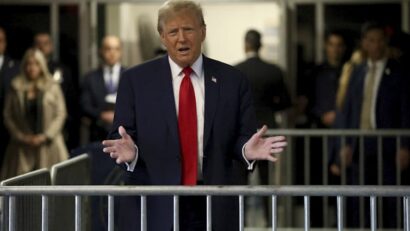
The first week of testimony is winding down in former President Donald Trump’s trial in New York City on charges that he falsified business records to cover up hush money payments to an adult film star, in an effort to avoid reporting the payments as campaign-related spending.
In a discussion that quickly shifted to topics well outside the courtroom itself, The Conversation U.S. spoke with Tim Bakken, a former New York prosecutor and now a legal scholar teaching at West Point, and Karrin Vasby Anderson, a scholar of political communication at Colorado State University, about the week’s events.
Their focus this week was on how Trump and other politicians interact with the U.S. media, and how their interactions relate to democracy itself.
Trump’s approach to the media
Anderson: Testimony in the case so far has indicated that Donald Trump thinks that an appropriate way to control or shape the news cycle is to pay off media professionals. That’s a departure from what politicians typically do, which is to hire media strategists who help them shape their message and their political platform in ways that garner favorable media coverage.
Trump’s approach is much more transactional. When he was president, the Columbia Journalism Review noted that he took the “unprecedented move” of revoking press passes from members of the White House press corps who covered him unfavorably.
And some journalists appear to be taking cues from Trump.
Earlier this week, in a Truth Social post, Trump attributed the following quotation to Fox News host Jesse Watters: “They are catching undercover Liberal Activists lying to the Judge in order to get on the Trump jury.” The New York Times found that Trump embellished the quote: The words “in order to get on the Trump Jury” were not in Watters’ initial report.
It’s not surprising that Trump embellished or changed a quotation. What’s really staggering is that after the fact, Watters posted on X the exact statement Trump had made, which was not what Watters had said on air. Essentially, Watters was allowing Trump to be his editor in his coverage and characterization of this case.
Regardless of how the court decides, I think the average American should be concerned that Trump approaches the free press from a transactional perspective. Trump looks to who he can pay off or threaten or intimidate so they will tell the story he wants.
Trump’s reaction to criticism
Bakken: Trump is saying that the media engages in the same kinds of distortions that he engages in when he says, more loudly, things that verge on falsehoods or are falsehoods.
Uri Berliner, a former editor for NPR, essentially raised the same allegations in a recent online column, concluding that NPR’s coverage is swayed by the personal identities and characteristics of its journalists. In essence, according to Berliner, NPR may distort reality, though in a more subtle way than Trump, by virtue of the journalists it hires, the sources who are quoted by the journalists and the stories the editors decide to cover, to the disadvantage of Trump.
Trump seems to be responding to what he perceives as the media, including NPR and The Washington Post, calling him names, such as “authoritarian,” including by characterizing his speech as action.
As a candidate and as a criminal defendant, Trump can point to verifiable facts that signal possible unfairness. For instance, he’s being tried by a jury selected in a jurisdiction where Democrats outnumber Republicans 9 to 1. And the piece about NPR said 87 NPR editors are registered members of the Democratic party and none are Republicans – though at least some are not members of either party.
Maybe he’s saying it’s as great a threat to democracy to be singled out by the democratic institutions – which are supposed to be seeing both sides – because he’s a dissenter or a communicator who is different from other people.
Anderson: The concern that I’m raising with the Jesse Watters case is not that it was friendly towards Trump. It’s that Watters changed his reporting to fit Trump’s narrative after Trump misquoted him.
Trump tweeted something that was a lie: He said “Jesse Watters said ‘XYZ’” and Watters didn’t – Trump added to Watters’ words. That was going to be a problem for Trump because he would have been caught misquoting Watters. So Watters fixed that by going back and matching Trump’s words.
The bottom line is that Trump has shown a willingness in the course of a campaign and presidency to influence the press in ways that other politicians have not.
Trying to get the media to give you a friendly news framing is politics as usual. Paying people with secret deals, or by intimidating or punishing journalists, that’s an entirely different thing. Regardless of whether Trump is convicted of a crime this time around, I do believe that this case is illustrative of his relationship with the media and how he thinks about it differently than other people who’ve been president of the United States.
Donald Trump speaks to the media briefly upon his arrival at court on April 25, 2024.
Jefferson Siegel/The New York Times via AP, Pool
Fighting back
Bakken: In 1996 I ran as a Democratic candidate for Congress in my home district in Wisconsin. I lost in the primary.
I have some experience in trying to convince somebody in the media to write a favorable article by giving a reporter information.
I don’t see how treating a friendly reporter more favorably than you treat an unfriendly reporter is any different. You’re advantaging a journalist who shares your point of view and disadvantaging a journalist who does not share your point of view.
Through deciding what stories to publish, NPR might be doing the same thing that Fox News is doing, except that we didn’t know it until Berliner spoke up. Both internally and publicly, NPR has rejected Berliner’s criticism, but its listeners may have had concerns. Since 2020, the number of weekly NPR listeners plunged from 60 million to 42 million in March 2024, according to The New York Times.
It seems to me that Trump is fighting back against the press in a way that’s more aggressive than other people’s, but he feels that is his only approach. A lot of people align with him because they feel that disconnection from what they believe are institutions that are no longer fair.
A difference from the past
Anderson: My job as I see it, as somebody who is trained in political communication, is not to stump for either side. But I do simply say: When a presidential candidate misquotes a journalist, and then later the journalist posts a second quote that confirms the candidate’s misinformation, that is dangerous, and we should be worried about it. The misquote, by the way, seems to have been influential in one of the jurors stepping down because she was getting bad feedback.
That’s not normal. It isn’t how most politicians, Republican or Democratic, have dealt with the national media prior to Trump. Läs mer…
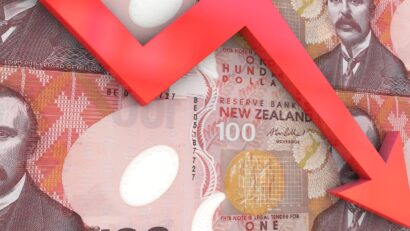
There is an ongoing global debate over whether the high inflation seen in the aftermath of the COVID-19 pandemic can be lowered without a recession.
New Zealand is not immune to this issue. Reserve Bank governor Adrian Orr has said a recession is needed to tame inflation – described as a “hard landing”. Others have disagreed, arguing New Zealand could and should aim for a soft landing (a reduction of inflation with no recession).
But are reductions in inflation inextricably linked to recessions?
New Zealand’s own economic history, it turns out, can give some guidance on this, and point to the risk factors within the country’s economic outlook.
Are we in recession yet?
There is no hard and fast definition of a recession. The term “technical recession” is widely used to refer to a period with two consecutive quarters of negative real growth in gross domestic product. By this measure, New Zealand entered a recession at the end of last year.
But many economists prefer the alternative definition from the National Bureau of Economic Research (NBER) in the United States: a recession is “the period between a peak of economic activity and its subsequent trough, or lowest point”.
Technical recessions and recessions meeting the NBER criteria do not always coincide.
Read more:
Central banks say interest rates will stay high but it’s unclear if this will be enough to curb inflation
In 2014, two researchers used the Bry-Boschan algorithm, which is based on the NBER definition, to identify New Zealand’s recessions between 1947 and 2012.
The question is whether we can identify these recessions in real time rather than in hindsight. The so-called Sahm rule stipulates a recession is likely when the unemployment rate starts to increase after recent lows, which can help with timely analysis of the economic conditions.
The dashed line in the graph below shows a recession indicator based on unemployment, dating back to 1986 when quarterly unemployment data was first published. The indicator usually coincides (within one quarter) with the start of a recession based on the Bry-Boschan algorithm.
According to this indicator, we were not in recession in the fourth quarter of 2023. However, if the rise in online job applications and fall in job ads continues, this indicator might flash red soon.
The highs and lows of NZ inflation
Since 1961, New Zealand has experienced eight falls in inflation (disinflations) of four percentage points or more. (Disinflation refers to when inflation drops but remains positive, while “deflation” occurs when the inflation rate falls below zero).
This four percentage point drop is required for New Zealand’s inflation to reach the Reserve Bank’s target of 1-3%, down from the 7.3% recorded in the third quarter of 2022.
Each letter in the graph above identifies the inflation peak before historical disinflation episodes. The shaded area identifies recessions up to 2012.
Read more:
Degrowth isn’t the same as a recession – it’s an alternative to growing the economy forever
The graph shows four drops in inflation – B, E, F and C – seem to be associated with recessions, while drops A, D and G were not. Disinflation G does have a recession quite late in the piece, the Asian Financial Crisis, but approximately half the inflation fall had already occurred before the crisis took hold.
The message is a positive one: a fall in inflation does not necessarily have to be associated with a recession.
But are any of the historical disinflation episodes more instructive than others about what might happen in the current situation?
Disinflations D and G, which were associated with soft landings, followed increases in short-term interest rates (such as New Zealand has recently experienced). Disinflation D was also helped by a halving in oil prices between November 1985 and March 1986.
Disinflation H is a bit of an anomaly. The inflation peak in 2011 was an artificial high as it came on the back of an increase in the goods and services tax in 2010.
A common theme with hard landings
Turning to the hard landings in the sample, early 1974 saw a large increase in oil prices after the 1973 Arab-Israeli war. The resulting global recession, coupled with restrictive domestic fiscal policy to quell oil price-induced inflation, contributed to disinflation between the second quarter of 1976 and the fourth quarter of 1978 (marked B on the graph).
Disinflation F, between the second quarter of 1990 and the first quarter of 1992, again occurred against the backdrop of a slowdown in the world economy. This reflected, in part, the increase in oil prices in 1990 due the first Gulf War, and tight domestic monetary and fiscal policies.
Read more:
Interest rates: if central banks don’t start cutting them soon, it could actually increase inflation
Disinflations B and F share similarities with New Zealand’s current situation, including restrictive (monetary) policy and unrest in the Middle East. Oil prices are up more than 15% this year, although they are yet to reach their mid-2022 highs.
Disinflations C and E were also associated with recessions reflecting global events. During deflation C, events in Iran led to an oil price increase, which both directly and through policy actions sent the US into recession in the early 1980s.
Disinflation E coincided with the October 1987 sharemarket crash which set off instability in New Zealand’s newly-liberalised financial system.
So if New Zealand is not currently in a recession, what are the country’s chances of avoiding one while trying to reduce inflation?
History suggests it is possible. But favourable global conditions are needed and, in particular, favourable geopolitics. Recent events in the Middle East, coupled with the ongoing war in Ukraine, are not positive signs. Läs mer…